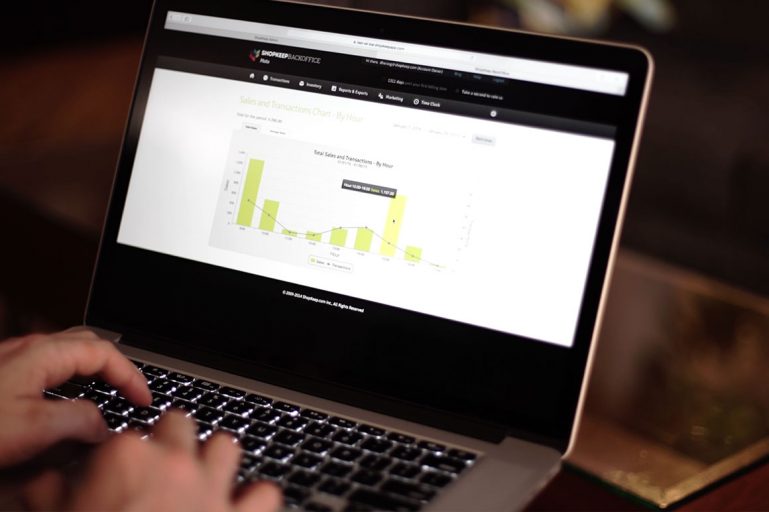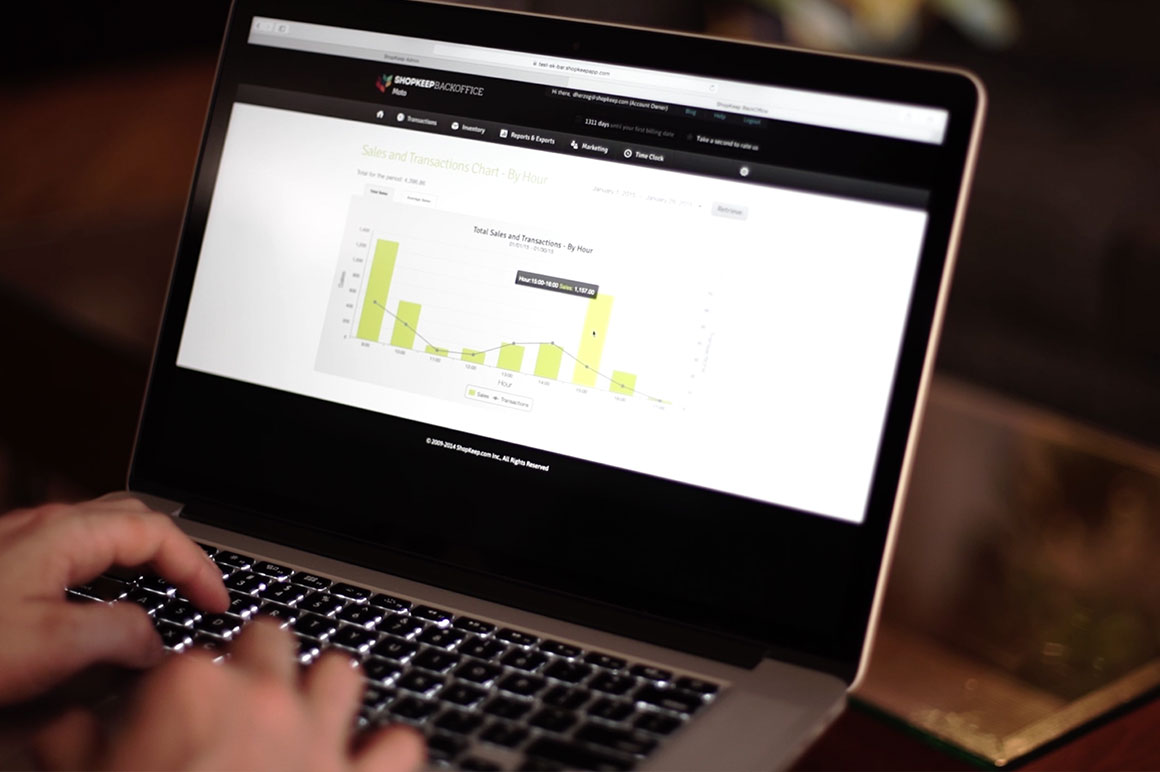
Top 5 Reports to Run With Your POS Software
iPad POS system. Congratulations, now comes the fun, data stuff!
The real challenge of POS Software isn’t just choosing the right one, it’s understanding how to get actionable insights from that sea of data. With all of the great analytics tools that come with the best POS systems today, you should not be making any major decisions without understanding what the data is telling you. Here are 5 reports that you should make a habit of checking, as they’ll directly impact your bottom line, regardless of the size of your business:
Top Selling Items
One of the most common reasons entrepreneurs give for opening their own business is that they want to tie their personal passions to how they make money. And while it’s amazing that so many people are able to pursue what they love in this way, it can also make for some really poor business decision-making. The fact that you love a particular dish on your menu, or style of dress on your shop floor is NOT a good enough reason to make it part of your product line. That’s where the data comes in. Your top selling item report is a simple, but powerful way to track real-world data about how much of each item is being sold, and identify which ones are selling the most. This is not your gut talking, it’s actual sales numbers, which means you can be accurate about planning how much inventory to buy, which products to feature and put on display, and which to actively market to your customers.
SEE ALSO: Winning End of Day Tips for Better Sales Reporting
Inventory Reorder

With the exception of service businesses, managing inventory is one of the most important but laborious tasks for a small business owner. If you’re tracking your inventory quantities on paper, you’re doing yourself a major disservice and adding a load of time to your workweek. Quality POS software will have a report that tracks your inventory quantities and updates in real-time as each item is sold. You can also enter a minimum quantity or ‘trigger point’ to alert you when specific items are below that established minimum number. This is a great way to ensure that you’re never caught short. After all, there really is nothing worse than losing a sale because you simply ran out of stock.
‘X’ and ‘Z’ Reports
While it’s great to empower your employees and not make them feel like you are standing over their shoulders all the time, keeping a close eye on their activity is going to be an important factor for your success. An ‘X report’ will provide your cash drawer balance at any point in the day. It is cumulative, meaning that it does not reset to zero – it simply keeps a running total of activity at the register. A ‘Z report’ is generated when you want to know the final balance of your cash drawer. A Z report does reset your drawer to zero, so you want to run this report at the end of the day or after each shift. Both of these reports tell the story of your cash drawer activity and what your employees have been doing at the register. When viewing these reports, you want to verify that the amount listed matches the amount present in the drawer to ensure the integrity of your employees. Granted, mistakes are inevitable, but frequent ones or – even worse – purposeful theft can shred your bottom line.
Sales and Inventory Activity by Date Range

Tracking your sales effectively is about more than just knowing how much you sold in total or even how much you sold of individual items; it’s also about understanding what times of the day these activities are happening most frequently. Depending on the POS software that you use, the corresponding reports may be called a variety of things, but the essential functionality is the same. This report outlines which items are selling most at specific times of the day, allowing you to prepare for the highest demand. What’s more, it will tell you how much you sold at specific times of the year, so you can predict inventory levels based on seasonality. It’s this kind of sophisticated forward planning that will allow you to optimize your sales around big dates like Valentine’s Day, Black Friday, and Christmas.
Customer Activity/CRM

The lifeblood of your small business is understanding what your customers want and communicating with them in their language – meaning highlighting the things that they find most important. CRM is just a fancy acronym for “Customer Relationship Management”, or a system for managing your business’s interactions with current and future customers. This report can come in many forms, but at the minimum, it should inform you of your top customers in terms of frequency of visits and purchase amounts, and track the number of new customers that you’ve added. ShopKeep’s version of this report is the Marketing Dashboard, and our integration with Mailchimp makes it easy to send out custom messaging and consistent communications. Your point of sale system should have these important features.
There are several other reports that you may also need to look at, depending on your business type, but these should get you well on your way to using your POS system to make smarter decisions for the business.
Want to try ShopKeep for yourself?
Just answer a few easy questions.
Need help finding the right point of sale?
Just complete the form. We’ll call you right back to explain how ShopKeep can work for you.
Hit the ground running.Sprinting, in fact!
Read our free, comprehensive guide, Small Business 101, to learn all you need to know about starting a thriving business.

